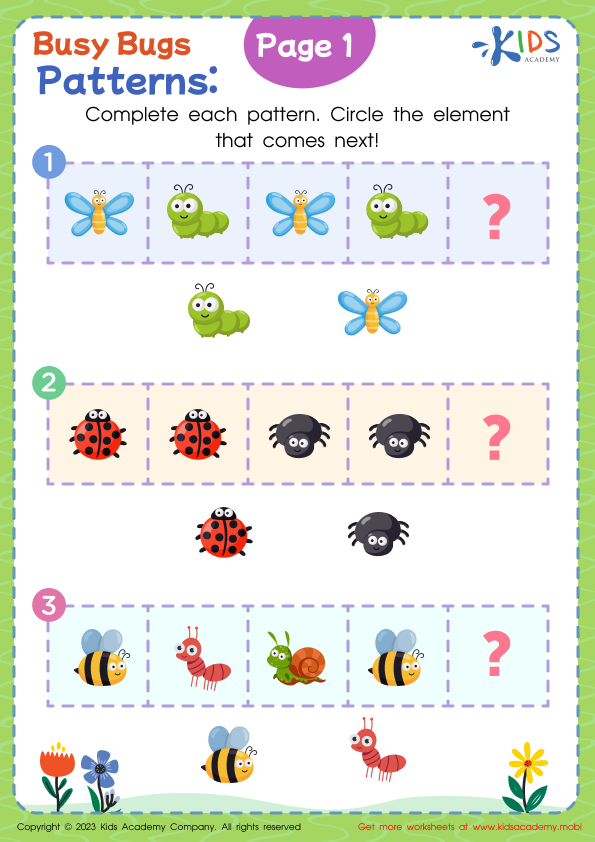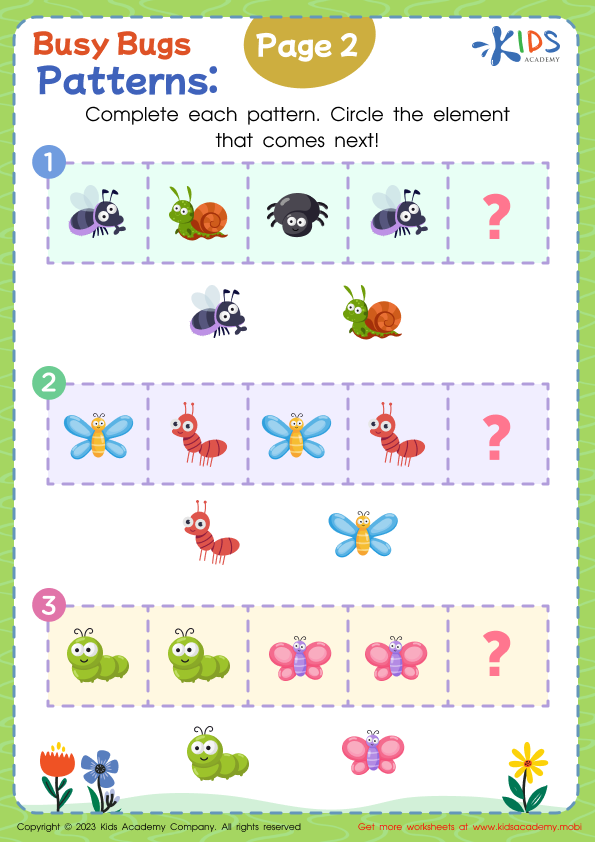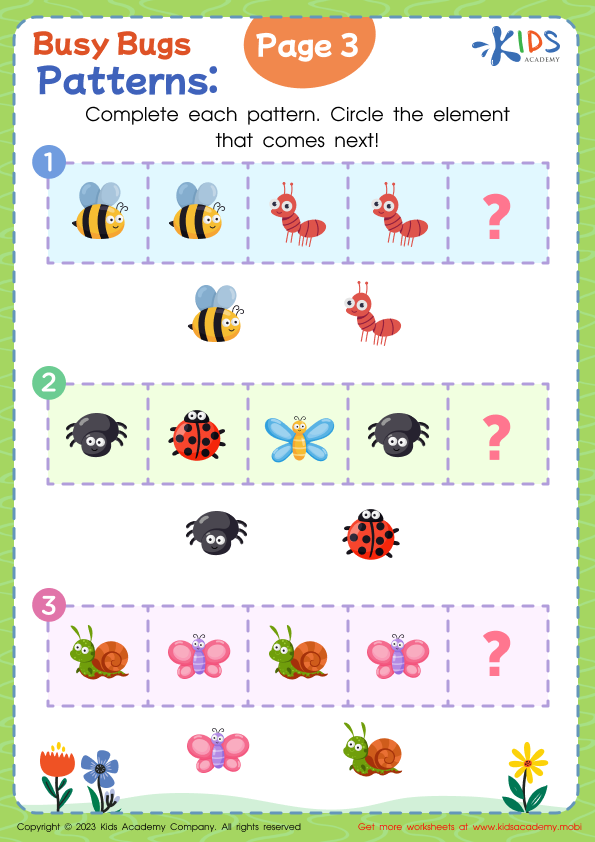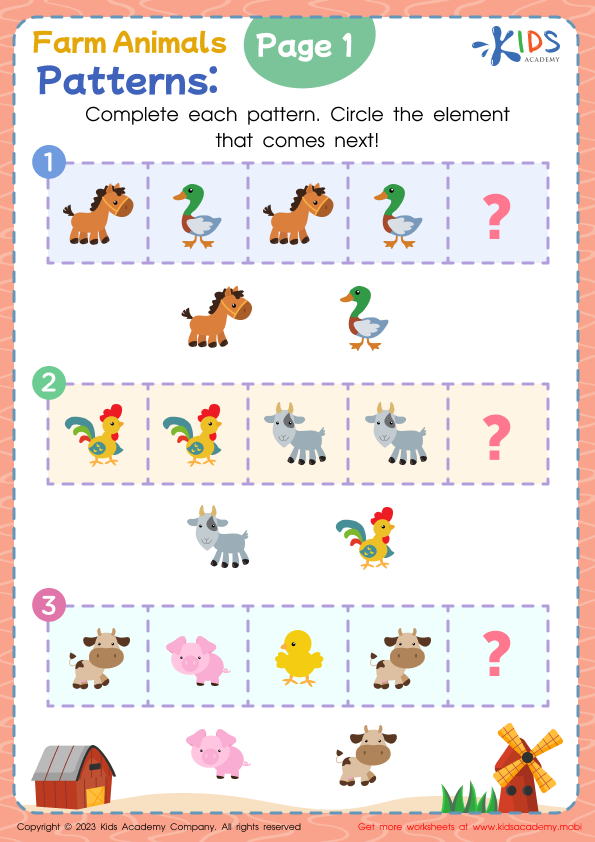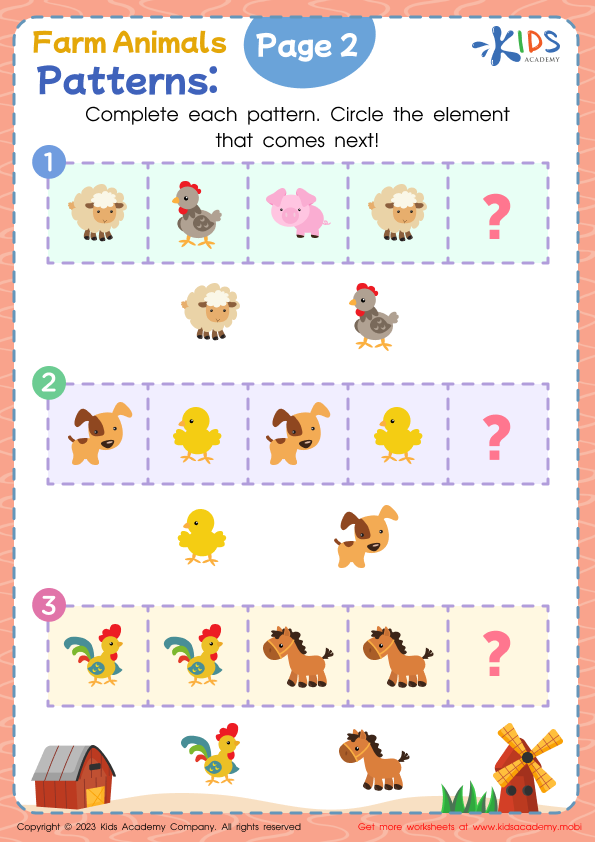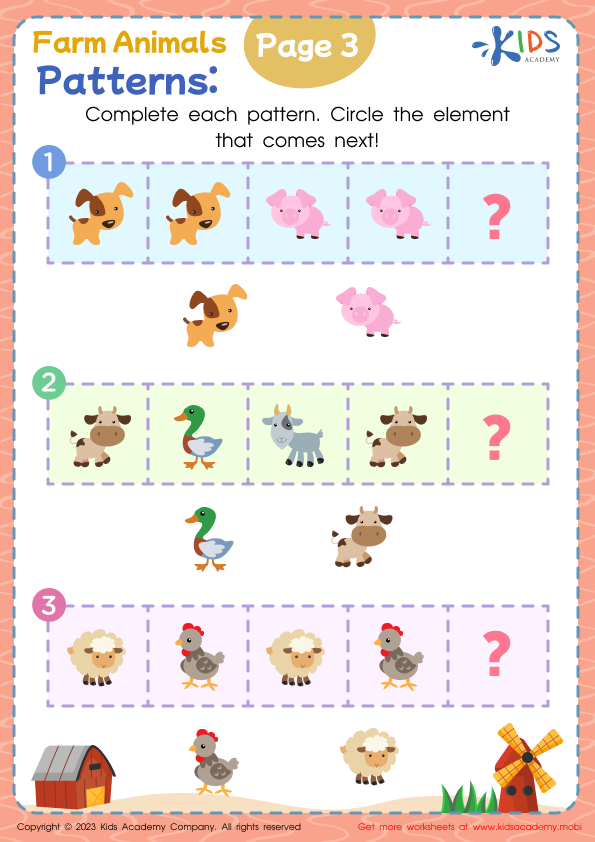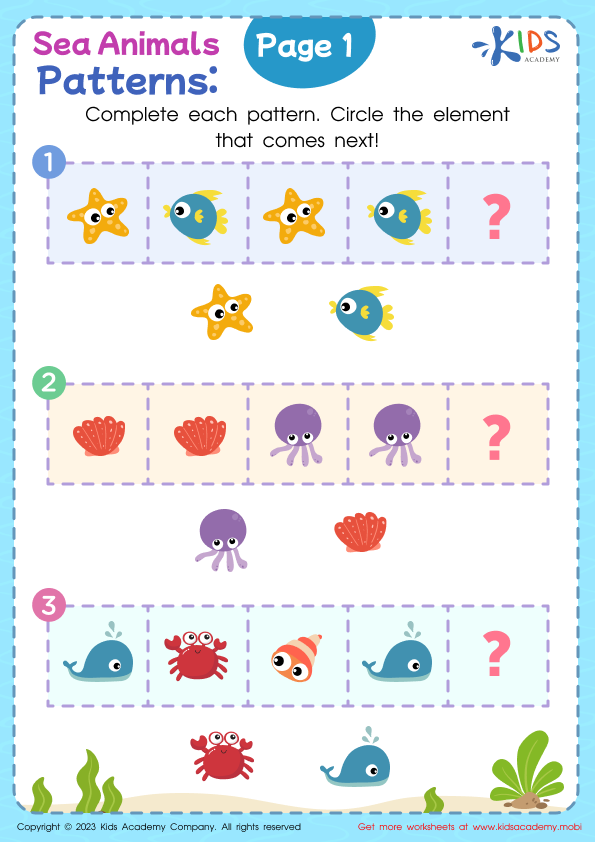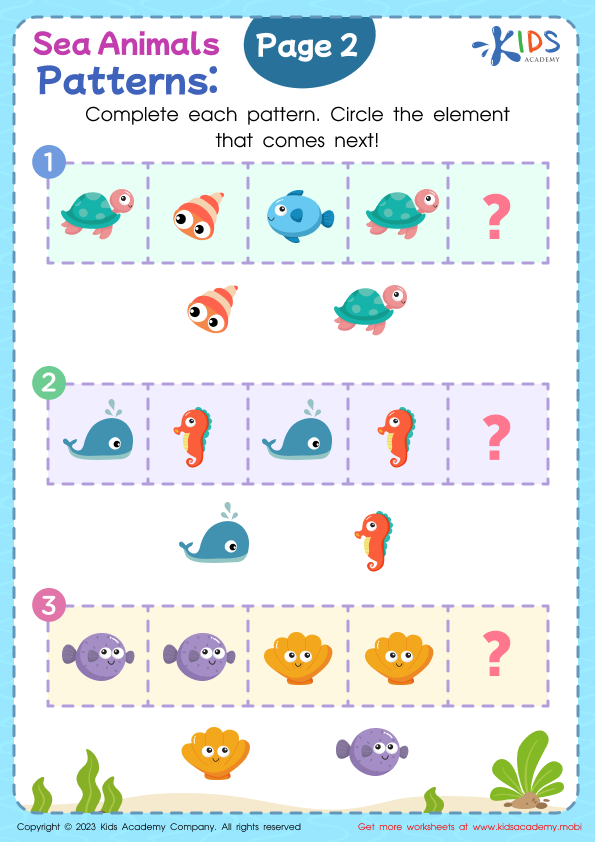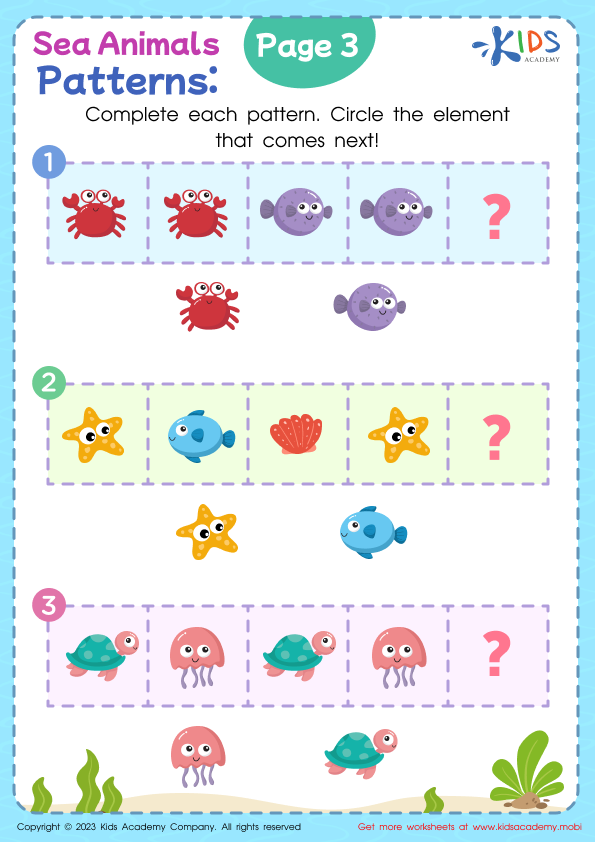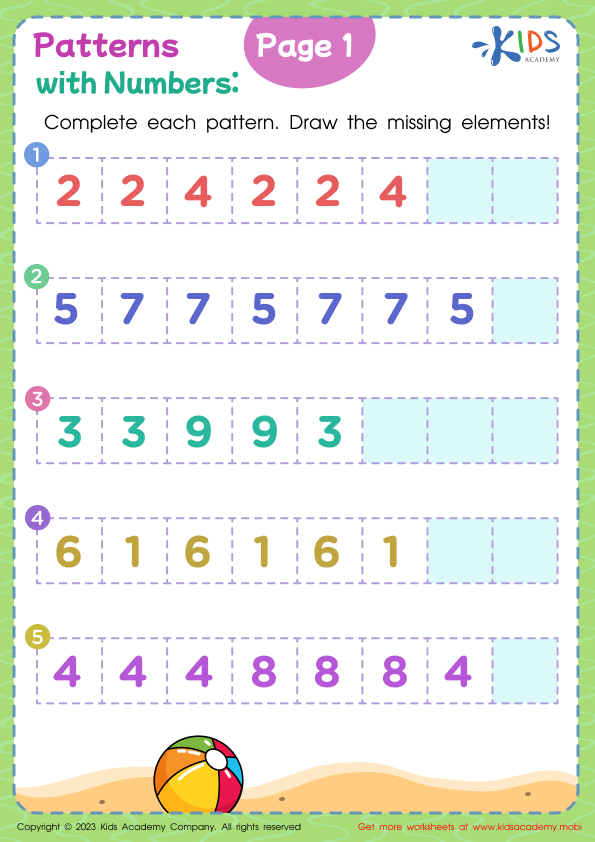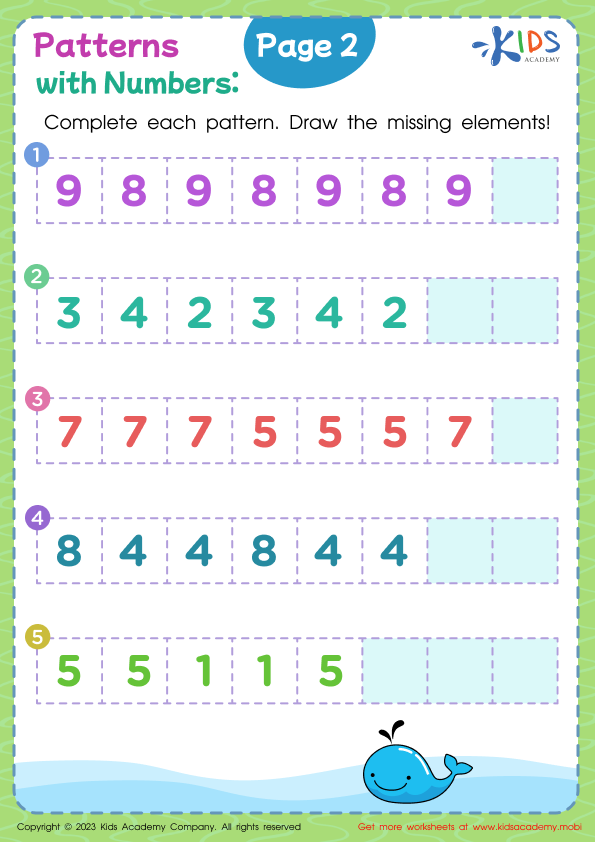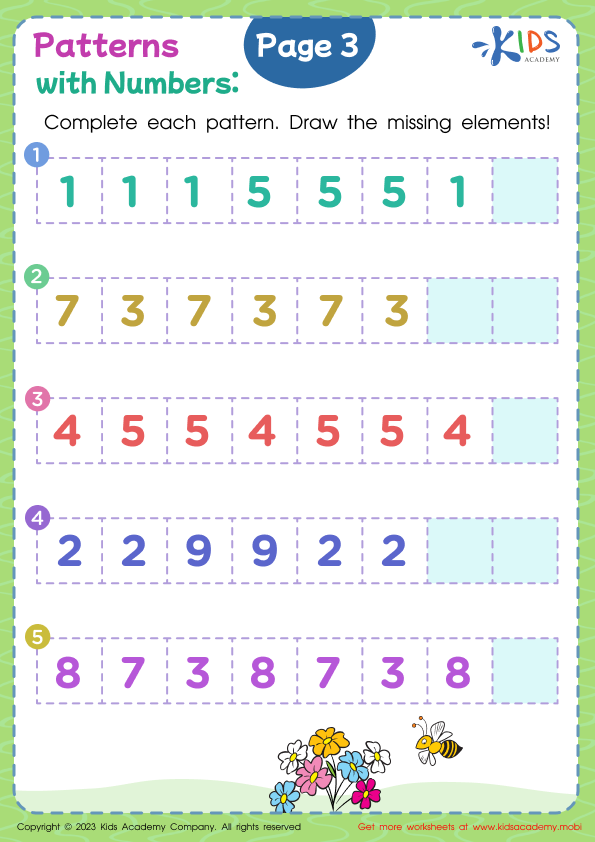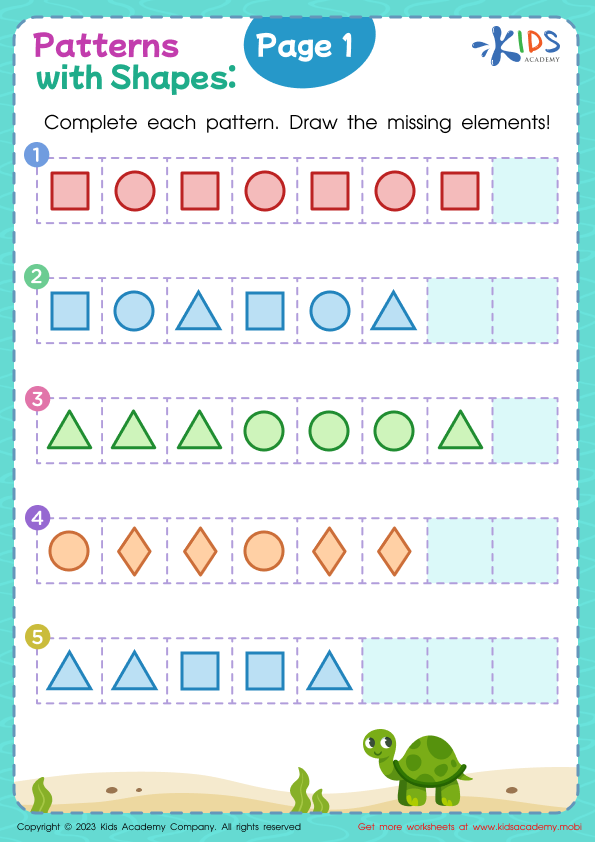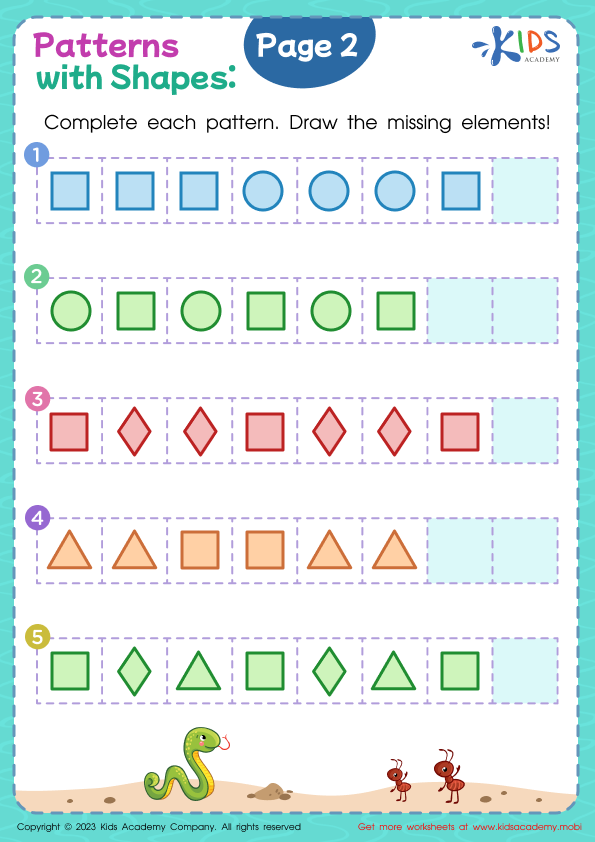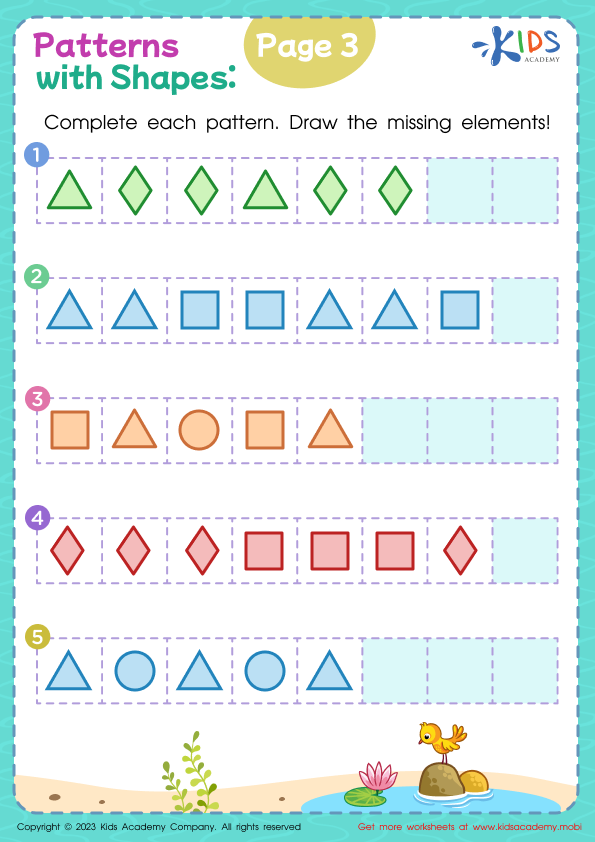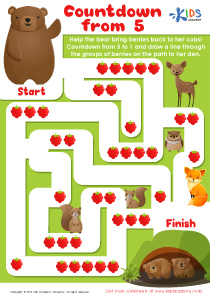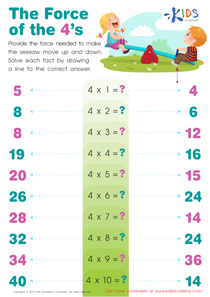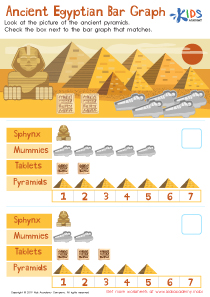Easy Patterns Worksheets for Ages 3-8
15 filtered results
-
From - To
Discover the joy of learning with our "Easy Patterns Worksheets for Ages 3-8"! Designed to engage young minds, these printable worksheets offer a fun and interactive way for children to explore patterns through colorful visuals and simple exercises. Tailored for preschoolers and early learners, our resources emphasize pattern recognition and completion, enhancing critical thinking and fine motor skills. Ideal for classroom settings or home learning, these worksheets are perfect for busy parents and teachers alike. Encourage creativity and confidence in your child's mathematical abilities as they learn through play. Access our collection today and watch your little one's skills flourish!
Easy Patterns for Ages 3-8 are crucial for early childhood education as they lay the foundational skills that support future learning. Understanding patterns cultivates critical thinking, enhances problem-solving abilities, and lays the groundwork for mathematical concepts. Children who engage with pattern recognition become adept at identifying sequences, relationships, and categorizations, skills that are essential not only in math but across various subjects.
Moreover, recognizing patterns is foundational for literacy skills; it helps children understand rhymes, predict story outcomes, and develop phonemic awareness. Teachers and parents who prioritize pattern activities will nurture these skills, yielding confident and competent learners. Easy Patterns also encourage creativity and exploration; children learn to create their own patterns through art, music, and play, fostering a joyful and engaging learning environment.
By incorporating Easy Patterns in daily routines—whether through fun games, storytelling, or hands-on activities—parents and teachers reinforce these skills while promoting social interactions and communication. Ultimately, patterns are everywhere in our world, and by recognizing their importance, adults can ensure children are not only well-prepared academically but also equipped with the cognitive tools they need for lifelong learning and success.
